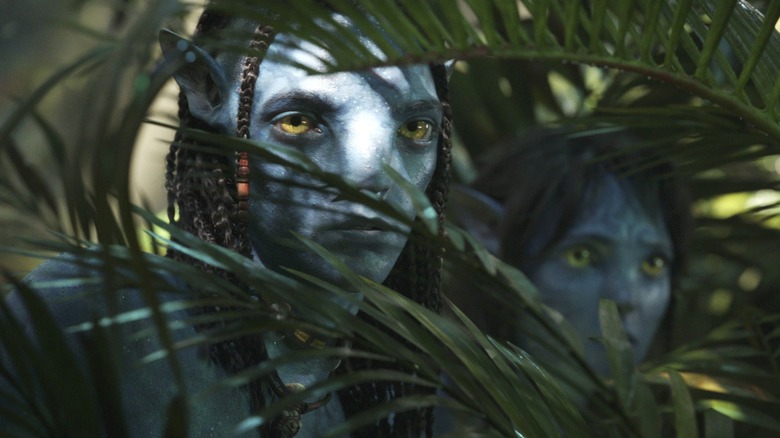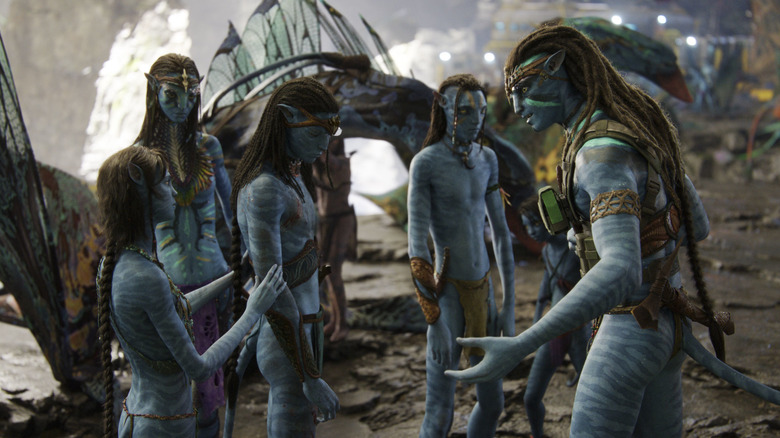James Cameron's Greatest Challenge In Creating Avatar Was Making The Characters Feel Like Real People
Once "Avatar" was released in 2009 and became one of the all-time highest-grossing movies in history (via Box Office Mojo), jokes about the formulaic story and Na'vi alien designs immediately began. "South Park" released a parody episode called "Dances With Smurfs," while "Saturday Night Live" produced a sketch featuring Ryan Gosling and his obsession with the movie poster's title font.
Yet "Avatar" and its recent sequel, "Avatar: The Way of Water," obviously remain extremely popular with moviegoers (via Spectator). This can be attributed to plenty of studio publicity and marketing, sure. But, like director James Cameron's other hit films, including "Terminator 2" and "Titanic," these blockbusters also tell relatable, emotional stories that are easy for everyone to understand. RogerEbert.com writes, "Massive blockbusters often clutter their worlds with unnecessary mythologies or backstories, whereas Cameron does just enough to ensure this impossible world stays relatable."
In a 2009 interview, Cameron discussed wanting to keep the characters grounded even when in a fantastical, computer-augmented alien environment.
Cameron believed emotion was crucial to making Avatar
James Cameron broke ground on new technology and visual effects in order to at last complete "Avatar" (via Screen Wellington). But the filmmaker doesn't believe these were the true obstacles to finishing the science fiction blockbuster.
Cameron instead told Kinowetter, "The biggest challenge was to make the characters — the characters were gonna be done with computer-generated techniques to make them feel real." The director explained further, "I don't know if we've achieved 'photo reality,' whatever that is, but I do think we've achieved character reality."
Neytiri (Zoe Saldana) and other Na'vi characters may be tall, blue aliens, but Cameron still wanted their emotions and motivations to be believable to a wide audience. Part of why production took so long was the need to create better recognizable facial expressions and believable performances from motion capture technology. However, based on box office and strong audience reactions to the sequel, both "Avatar" films seem to have achieved what Cameron wanted: making viewers care deeply about these larger-than-life characters.

